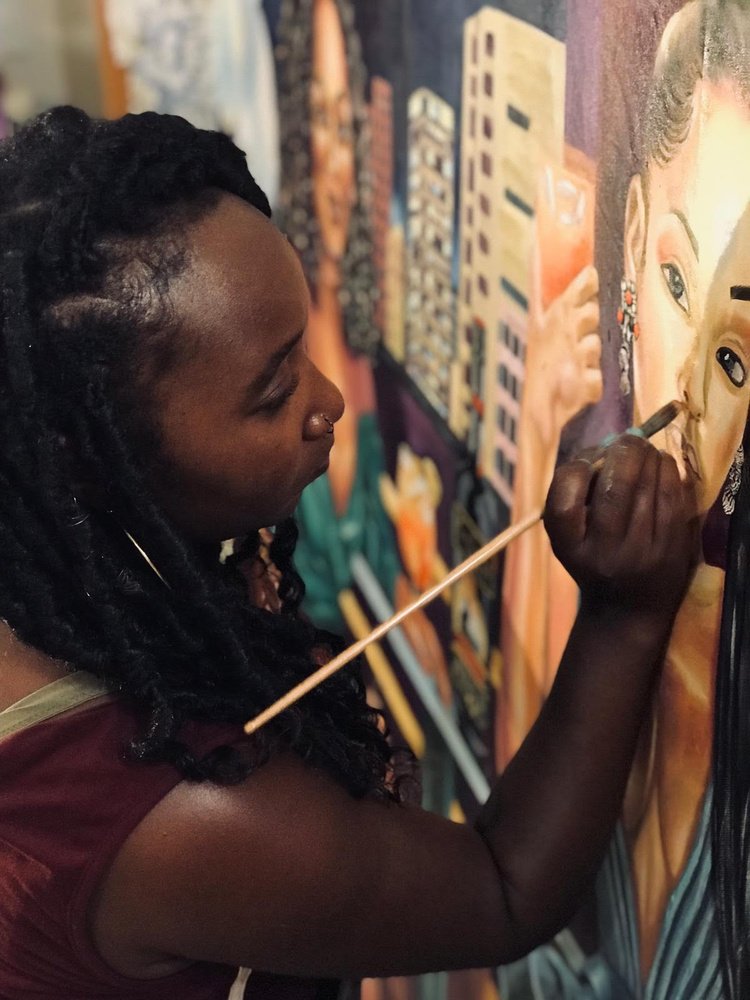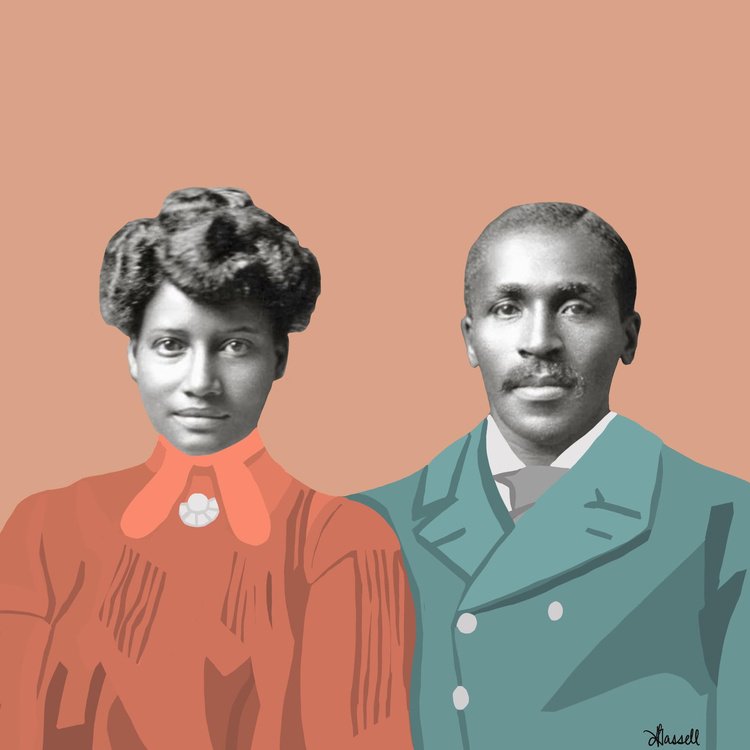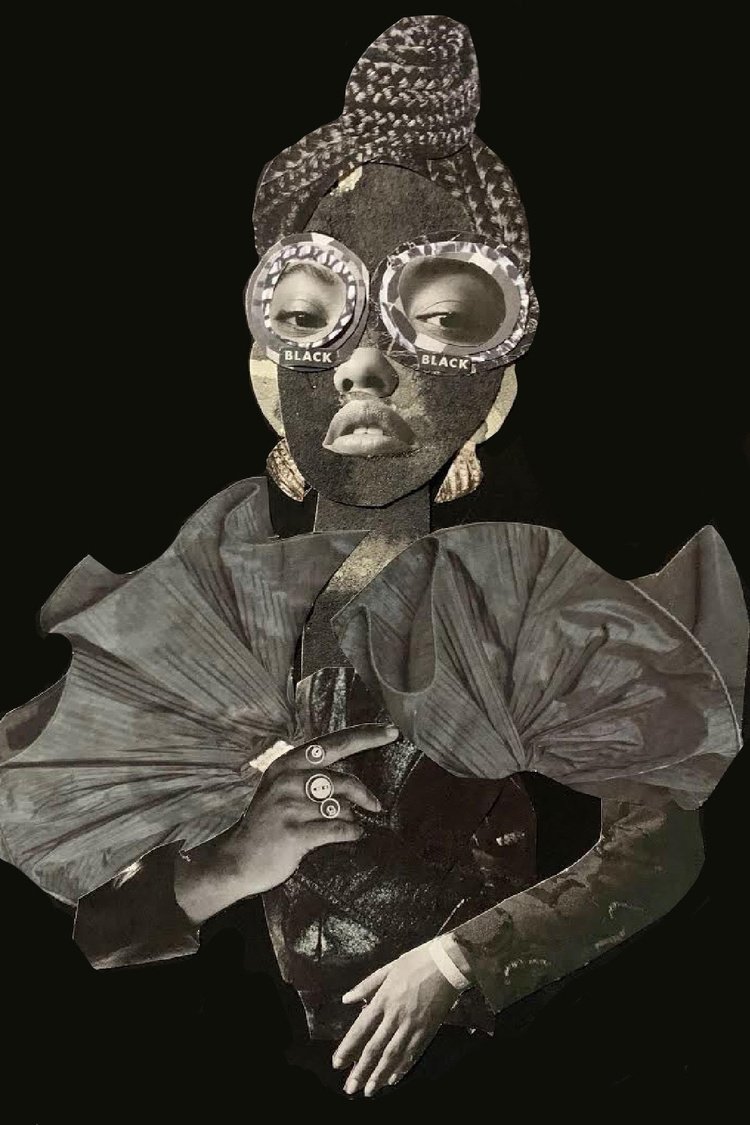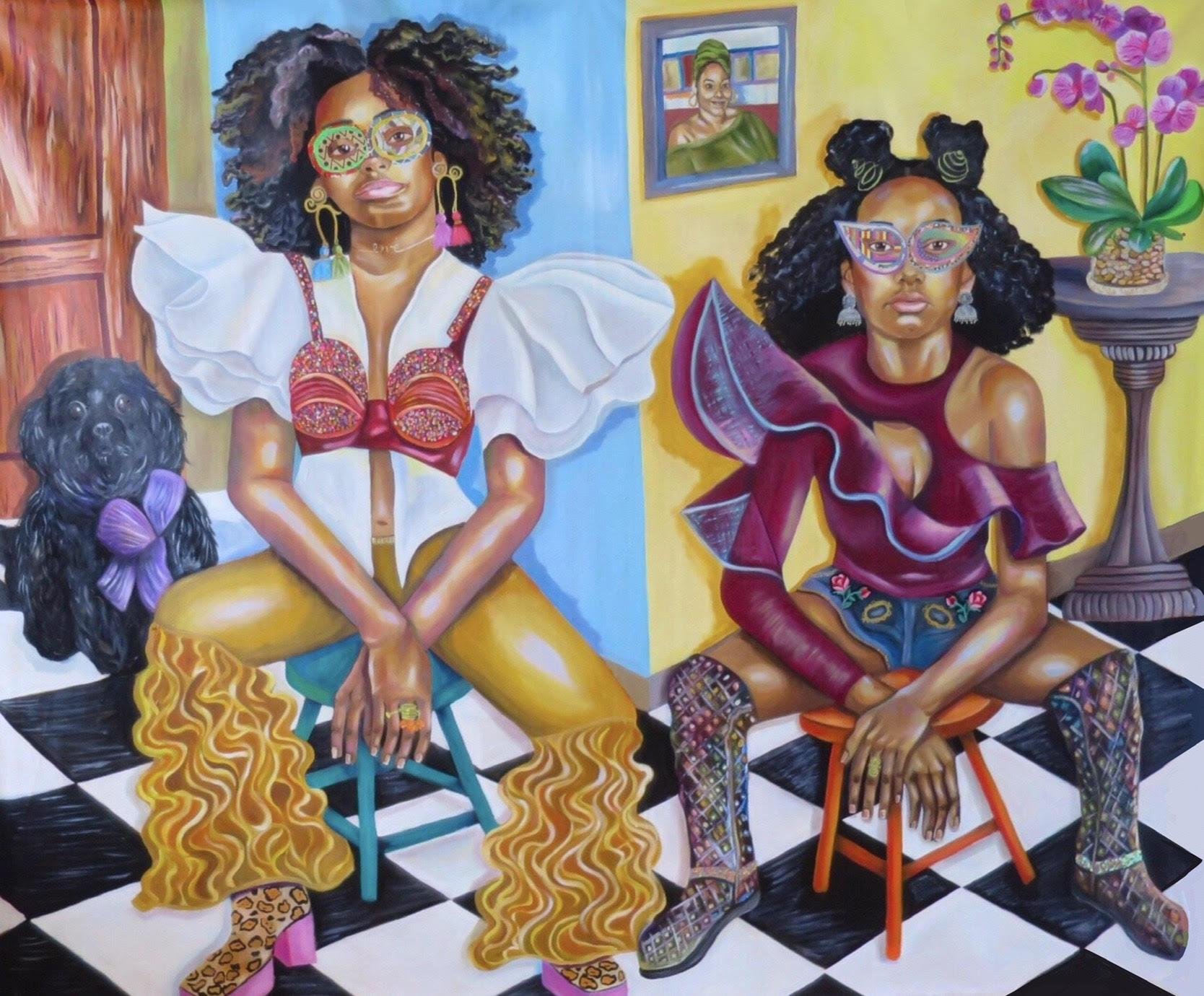A Conversation with: Gherdai Hassell
Gherdai Hassell is a Bermudian artist, currently based in the United Kingdom.
In this interview, Gherdai discusses the development of her collage practice and how living in Bermuda, China, the United States, and the United Kingdom changed her work.
Prints of her work can be purchased on her website.
What inspired you to create collage art?
I've been making artwork for as long as I can remember. I used to actually do something similar when I was younger. I would draw these “paper people” as I used to call them. I gave them names, whole lives, and more. Once I moved away from art, I went to university and studied public health. I didn't make any artwork for about five years and I always felt something was missing. Eventually, I got back into creating art and it took over everything in my life. It put things in perspective for me, in terms of what my purpose is. At that time, I was in law school here in the UK and then made the decision to leave. I was trying to figure out how I was going to study for school, make art, and have a job – I just knew I had to let something go. I could not let art go again. I decided to leave law school, travel to China, and set up a studio there. It’s been completely rewarding, setting up a studio in China. I found that I was in this space, where I knew that I wanted to make work, but I didn't necessarily know what I wanted to make work about. I just decided to focus on my life experiences, particularly what I'm experiencing here in China. Obviously, I was one black person out of maybe ten in my city in Guiyang, China for about three years or so. It was very challenging. I think just being able to turn to my art to deal with these kinds of issues was really therapeutic for me. So, I chose collage.
Initially, I was self-taught but now I am in a master’s program. But before [the program], I did not really know what I was doing; I just knew I wanted to paint. That was difficult for me because I did not have the necessary skills but needed a creative outlet. I just started to pick up materials that were around me. I had different types of magazines, origami, and papers from my classroom that I would use to teach my students because I was teaching at the time. That is how that grew. Before I knew it, I was spending more time collaging than I was actually painting. It is interesting because now I am trying to work in both.
As your collage practice has developed, how have you experimented with materials? What has that process been like?
When I was in China, there was this traditional Chinese black ink, which was really cool, because you could get it for an inexpensive price. It was interesting to me that the ink was so rich and so vibrant. All you had to do was mix it with water, and it could create amazing marks.
So, I started experimenting with what that meant. This Chinese traditional ink was black and it led me in this direction of exploring what it means to have black skin in a place like China, using China's most popular and most accessible material. This was a twist on how the medium is usually used. For me, it was exciting to use their own material in a way that had never really been explored or used before. I was also using some of their origami papers and small printed papers with various patterns and colors. I just loved how that looked. I have always been drawn to color because I'm Bermudian and color exists around us all the time. In China, most of the colors are black, white, or red. It was extraordinary for me to find these origami papers with these intricate designs. I would assemble them in different ways and forms. The act of assembling, placing, and replacing things was somewhat therapeutic for me. It was almost as if I was trying to figure out myself and so the process became meditative in a way.
Outside of introducing vibrant colors to your work, how else has Bermudian culture and art influenced your work?
Bermudian culture is absolutely fantastic. There are so many things that make us who we are as a people. Bermuda is twenty-one square miles. Everyone knows who you are. Moving from a place where people know each other, to a place where no one knows you, almost makes you feel insignificant. No one knows your background or anything about you, and you are completely different. I think that almost gives you this fresh slate where you have to create something from nothing. That was actually the most challenging part about starting to make work in China. I think that that transition from Bermuda to China has been completely paramount in my artistic practice, and has led me to so many different kinds of experiences with people. The collages are quite special to me because I think they emerged out of this place of wanting to figure out who I am. I was trying to explore what it meant to be placed out of context, in a place where I didn't see anyone that looked like me. So, I almost had to build or piece together this idea of what looking inwards meant to me. That is where the collages stemmed from. It has led me to use different materials.
Gherdai in her studio in China
Moving from Bermuda has influenced your art, being in law school made you push more into going back into the arts, and living in China has integrated new materials into your work. How do you think your work, whether in materials or subject matter will change given this period of time? Especially now that you are in the UK?
I already think that my work has changed since I've been here. Interestingly, being in the UK has shifted me into a place where I am now thinking about colonialism and its effect on my home country in Bermuda, which is still a British territory. It is definitely one of those topics that a lot of people don't really talk about, especially from my country. But we're still a territory of the UK. Now, what I'm moving into is the relationship between colonialism and Black identity and how our concepts or constructs of what we believe to be ours may not necessarily be ours. Also, how moving into the new world and the forced migration from Africa during the slave trade has shifted how we identify. I am working on a few different portraits where I am now looking at a family lineage, different maps, and more. Last summer, I went to Bermuda and visited the archives. I had come across some amazing photographs that I had never seen and the slave registers in Bermuda, which I had never even heard about before - and I lived there most of my life. These things are not talked about in Bermuda. It is taboo, almost as if it didn't happen or it didn't exist. Yet, it is right there, and in plain view for anybody to go and visit and see. Discovering those things and then also discovering my family tree really underscored this history for me. This history about myself and my people, our relationship as island people in the new world and the Caribbean is a result of colonialism. Being here in the UK has moved me in that direction. My experience is very different than a Black British person’s but I think we have more similarities than we can even imagine.
Are there any other things from the UK that have inspired your art?
Yes, I absolutely love Lynette Yiadom-Boakye and Yinka Shonibare. I've been looking at his work a lot because he also deals with this idea of colonialism, globalization, and how that has spread across the world. One of his pieces I was swooning over was his British Library. I love how he's using history and weaving that into his work. That’s where I am now. I'm moving away from this idea of art as therapy, which is what it started as for me, into art as a more intellectual, educational, and/or historical practice. Contemporary work is based on historical things: texts, images, and interlocking these different aspects of Black identity into the work in some way, shape, or form. So Yinka Shonibare? I love his work.
Between Disappearance and Recall, Digital Collage
With Yinka Shonibare’s work, he uses a variety of media – from clothing designs to sculptures. Do you think you will be experimenting with different tools and processes?
Yeah, definitely. When I look at his work, I aspire to reach that level. To have a whole interdisciplinary practice that is not stuck in one medium is phenomenal. I think it's really special when an artist can make work and find different ways to talk about the same topic. I think that one form may not resonate [for one individual] or, but can communicate [the same message] with performance or sculpture for that same person. This is something that I would love to explore more in my practice as it grows. Collage is a good place to start. And now the world is changing, things are becoming more digital. There are so many things we can do: we have sound, we have installation, so much that artists can explore. That’s something I’m excited about in this practice.
I know you are a part of the Wearable Art Auction, how was that experience?
The opportunity came unexpectedly. It was something I would have imagined myself to be doing maybe 20 years from now. To be having these kinds of experiences now is so humbling. Especially for me, I just started three years ago and to be able to be recognized on such a platform was really special as an emerging artist. I was really grateful to be a part of an initiative that is supportive of giving back to those who are interested in art. I love to align myself and my practice with things that I believe in. The Wearable Art Gala was raising money for WACO (Where Art Can Occur Theater), something that I believe in. I was thrilled that I could be a part of that.
Did that experience change your idea about how art can function in society?
It changed my idea about who consumes art and who collects art. I've always envisioned art as this elitist thing that has shut out Black people. To be a part of the Wearable Art Gala, where most of the people at the event were Black changed my idea about who consumes and collects art. It gave me the motivation to push and continue to make work because I’m making work for people who look like me. If I am putting work out and people can find me, we could have this relationship [through the work]. That is what we have been saying when we think of art and community. This is the reason why you have your organization – to introduce young Black collectors to different artists. I think it's so important because we're here, but we just need, I think, the connectivity and the community to know the places in which we can find one another. I think the Wearable Art Gala was fantastic because it allowed me to be in an environment where Black collectors can see me, it provided visibility, and I think that that is extremely important as Black creatives.
Has your audience for your work changed since?
Interestingly, I think when I first started I was saying the art was more so something that I wanted to do for myself. Over time, I realized, that I can make work with a message. I can take people on a journey with me, I can have stories to tell, and I can tell other people's stories. So, art becomes more about community. What’s been really special is finding community through the work. It's about, the people that I can reach out to and the people who the work can reach. They can see themselves reflected in the work. My audience has grown into Black women. That's my audience and that's who I'm speaking to. It's cool when other people see the work and even buy it, but my primary audience is Black women. I want Black women to know that I'm making work for us.
Touchstone to be Measured, 8x10 inches, mixed media collage on card, Kanyer Art Collection
In previous interviews, you mentioned that your collages of Black women almost function as avatars. Can you speak more about that?
I think as we progress in life, and we get to know ourselves more, I think we can reach deeper levels of self-understanding and realize we are more than our bodies. We are spirit and soul. The idea of this avatar is that we can see who we are is so much deeper and much more fluid. And not in a box, because a lot of times we base our identity on what we look like as opposed to a deeper level of understanding. Being a Black woman is important because I think that that shapes so many of our experiences. But I think that this transcends that to get to a deeper level of ourselves. We are multifaceted and complex and dynamic.
Is that maybe another way that collage and assemblage come into it?
Absolutely, absolutely. That is what I was exploring when I was in China, and even now, as I'm still making collages. It helps me to organize in my head – the piecing together of many different experiences, feelings, and emotions. These things that we experience dictate how we live our lives outwardly. So, collaging is a metaphor for that.
Sleeves Filled with Pearls, 6.2 x 4.4 ft, mixed media & oil on canvas





